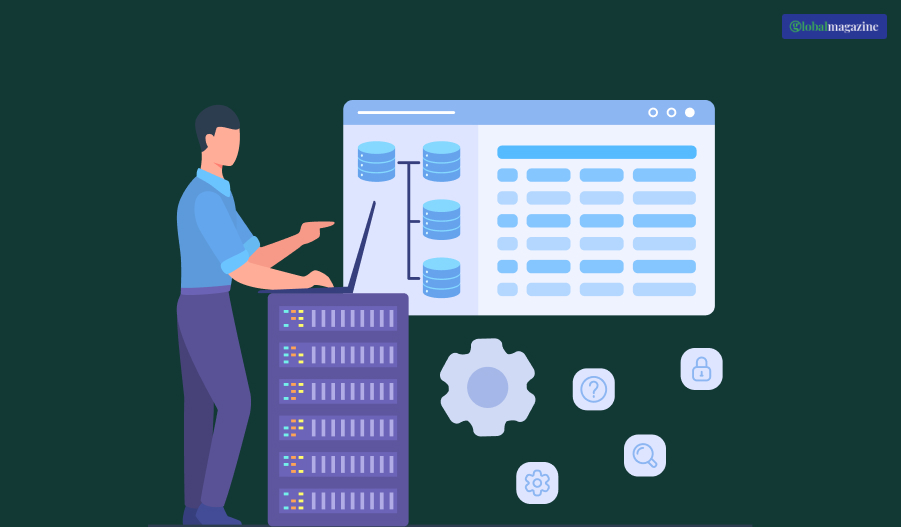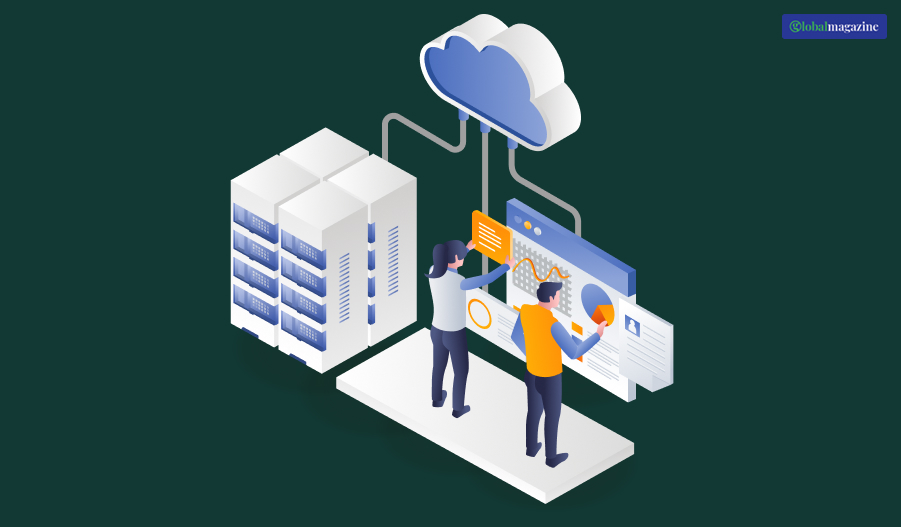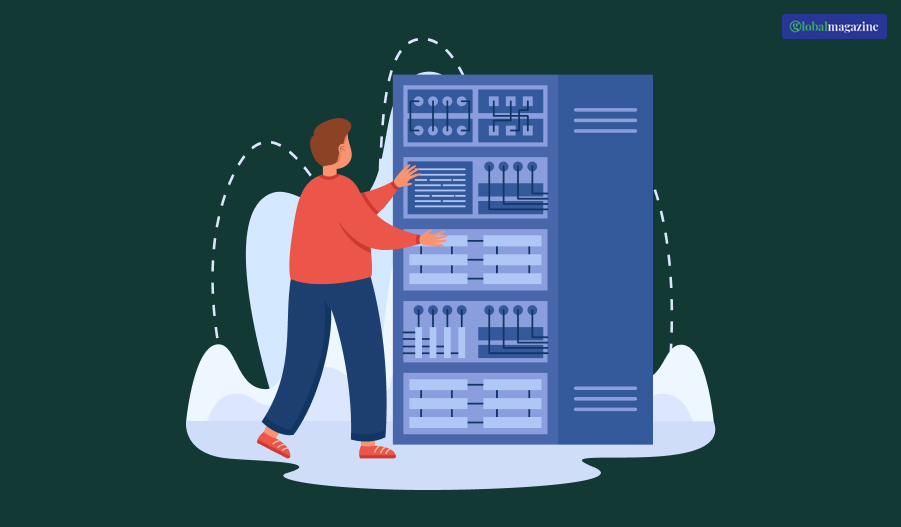Enterprise Data Integration: A Comprehensive Guide to Unifying Enterprise Data Ecosystems

In today’s digital era, an organization’s success utterly relies on how effectively it uses data, both internally and inter-organizationally. Businesses gather information from CRM systems, ERPs, IoT applications, Social media, cloud applications, and third-party platforms.
When those divergent data sources are integrated seamlessly, getting insights into action, improving efficiency, and ensuring data consistency are possible. This is where enterprise data integration is transmogrified into a mission-critical discipline.
This includes an in-depth, query-driven guide that takes you through the what, why, and how of enterprise data integration, as well as the technologies, trends, challenges, and best practices that follow.
How Does Enterprise Data Integration Work?

Enterprise Data Integration (EDI) involves merging technical and business processes to transform data from disparate systems and sources into a centralized, accessible, and meaningful format.
Core Integration Methods:
- ETL (Extract, Transform, Load): The old-school way; you extract data from wherever it sits, transform it to fit a data warehouse schema, and load it.
- ELT (Extract, Load, Transform): Transformation occurs after data is loaded onto a cloud architecture.
- Data Virtualization: It is about gaining integration without moving data physically and allowing that access in real-time, with some layers of abstraction.
- API-Based Integration: This type of integration communicates with the applications and services using APIs to share and transmit data in real-time.
- Event-Driven Integration: Systems such as Apache Kafka and RabbitMQ are to support the high-volume, low-latency event-based exchanges of data.
Thus, EDI can flow in either batch orientations or real-time updates. Real-time allows systems to be updated instantaneously, while Streaming enables data to be processed constantly as it streams in.
Why is Enterprise Data Integration Important?

As organizations develop, data becomes increasingly scattered. At this point, integration is critical for combining this data, allowing it to be leveraged for innovation and competitive advantage.
Importance of Enterprise Data Integration:
- Unified Business Intelligence: pulls data from different systems into one true source for analysis.
- Enhanced Data Accuracy: minimizes discrepancies and duplicates throughout systems.
- Increased Operational Efficiency: automation of data flow across departments.
- Cradle-to-Grave View for Customer-Centric Operations: Grant customer views such that offerings can tailor to their needs.
- Compliance with Regulations: lessens the probability of noncompliance, provides data traceability and makes audits easy.
- Quickening Innovation: Helps with quicker decision-making and execution.
What is iPaaS, and How Does it Support Enterprise Data Integration?

iPaaS stands for integration platform as a service; it is a cloud-based set of tools for assuring integration for both cloud and on-premises applications.
Key Benefits of iPaaS:
- Deploy Swift: Thousands of prebuilt connectors cover hundreds of platforms.
- User Shyness: Business users are enabling the low-code/no-code environments.
- Cross Environment Integration: Connect this with legacy, hybrid, and cloud-native systems.
- Orchestration: This is responsible for managing workflow and the integration logic.
- Scalability and Flexibility: It flexibly adapts with increased data volumes within enterprise.
Popular iPaaS Solutions:
- MuleSoft Anypoint Platform
- Dell Boomi
- Informatica Intelligent Cloud Services
- SnapLogic
- Workato
All these lead toward iPaaS, which is suitable for companies that want to modernize their infrastructure and adopt SaaS.
What are the Pillars of Effectiveness for Enterprise Integration?
For the enterprise, the integration must support their establishment foundations into the ground rocks known as applicable pillars:
- Connect for Data: Support formats from data varied as XML, JSON, CSV, databases, API, and communication protocols.
- Data Governance: Policies for ensuring the right stewardship of data, tracking lineage, and compliance.
- Security and Privacy: Role-based access controls, encryption, and secure mechanisms of transporting data.
- Scalability: Accommodating increased demands from end-users and data volume makes data integration truly enterprise integration.
- Performance Monitoring: Real-time insight into data flows and integrative issues.
- Metadata Management: Assisting in the indexing, searching, and understanding of integrated assets.
Best Practices for Enterprise Data Integration
The successful establishment of EDI integration by achieving through the application of proven deployment strategies and approaches.
Key best practices:
- Clear Objectives Definition: Connect integration efforts to business objectives, such as reducing reporting time or unifying customer records.
- Assess and Clean Data: Data profiling, validation, and standardization.
- Phase Approach: Start with high-impact integrations and scale up.
- Implementation of Governance: Define data ownership and quality standards with compliance checks.
- Reusable Components: APIs, mappings, and workflows should be modular.
- Automated Testing & Error Handling: All the pipelines should have validation checks.
- Continual Maintenance: Monitor the health of pipelines; detect changes; and adapt the pipeline to system upgrades.
What Are the Benefits of EDI?
What are the somewhat obvious benefits from a technical perspective, and also business-oriented applicability?
- Fast Insight: Turnaround speed on data entry for dashboards and reports above is eliminated.
- Homogeneity and Accuracy: Reliability between the systems to each other.
- Real-Time Decision Making: Enables an operation to be agile and be responsive to change.
- Lower Operating Costs: Less manual visibility and quicker fixes to problems.
- Better Collaboration: Single view of data across all teams.
- Improved Customer Experience: Enhanced personalization and responsiveness are provided by this synchronous operation.
Enterprise Data Integration Tools, Trends, and Technologies

A set of technologies in constant evolution facilitates enterprise integration.
Leading Innovation Tools:
- Informatica PowerCenter/IICS
- Talend Open Studio/Data Fabric
- Apache NiFi/Airflow
- Microsoft Azure Data Factory/Synapse Pipelines
- Oracle GoldenGate/Data Integrator
- IBM InfoSphere DataStage
Emerging Technologies & Trends:
- Artificial Intelligence in Integration: Predictive mapping, anomaly detection.
- Data Fabric Architecture & Mesh Architecture: Distributed data management framework.
- Serverless Data Pipelines: Event-driven processing with tools such as AWS Lambda.
- Real-Time Analytics: Streaming integrated with platforms such as Flink, Kafka Streams.
- GraphQL and Open API: Flexible and developer-friendly interfaces for integration.
- Metadata-Driven Integration: Automated schema discovery and transformation.
What are Some of the Common Enterprise Data Integration Challenges?
Though the tools are generally efficient, these companies face some challenges in their diverse operations.
Common Challenges:
- Data Silos: Teams working in silos create concatenated data environments.
- Data Consistency: Consolidation is complicated by differences in format, units, and naming conventions.
- Security Risks: Unauthorized access, unsecured transfers, and poor governance.
- Latency: Outdated batch systems are causing a delay in time to insight.
- Legacy Infrastructure: Systems that cannot interoperate, antiquated protocols.
- Resource Constraints: Shortage of integration architects, developers, and business analysts.
- Change Management: Aligning people and processes during the integration rollout.
It takes strategic initiative to close such existing client data silos, align the given technology with business goals, and leverage innovative solutions through integrated and actionable insight.
Whether it be traditional ETL pipelines or cloud-based infrastructures like iPaaS, enterprise data integration is at the heart of today’s competition for a data-driven marketplace.
Companies can build a strong integration ecosystem that scales, remains secure, and is prepared for the future by adopting new technologies, continuously examining best practices, and directly confronting key challenges.
























